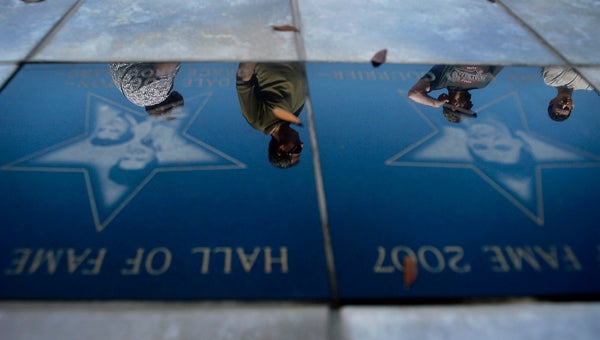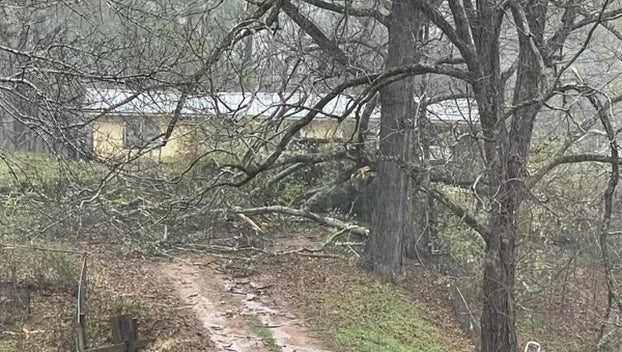Columbus cardiologist fled Uganda death squads as a teen
Published 1:33 pm Saturday, June 2, 2018
COLUMBUS, Miss. (AP) — When Dr. Julius Kato was just a boy of 14 he began running.
He hasn’t stopped running since.
The year was 1974, smack in the middle of an eight-year reign of terror by Ugandan madman Idi Amin. At various times, Amin’s paranoia led him to target various groups — Catholics, Jews, Asians — for slaughter. The World Health Organization put the number of executions Amin ordered at 300,000, although it’s hard to arrive at a precise figure.
Kato, the third of 14 children in a Catholic family, arrived home one day to find Amin’s soldiers holding a knife to the throat of his sister and pointing a gun at his mother’s head. When a soldier turned the gun on him, Kato ran, ultimately crossing the border into Kenya, never to return to his home country. His immediate family survived, but he had other relatives and childhood friends who did not.
In a sense, Kato has been running for more than 40 years, first fleeing in terror and, now as cardiologist at Baptist Memorial Hospital-Golden Triangle’s Columbus Cardiovascular Care Center, running toward those with critical medical conditions.
“I have been looking at my life and evaluating it,” said Kato, who has been in practice in Columbus since March 15 after leaving his practice in Lima, Ohio. “Most people grew with their family. I didn’t. I raised myself after age 14. I learned how to survive at a very early age. Because of that, my family and my patients have become more enjoyable to me. This is something that developed over time, and my energy and that anger I had as a young boy has transformed into helping people.”
A thirst for knowledge
By the time Kato arrived in the Kenyan capital city of Nairobi, he had spent the little money he had. He was there alone, penniless. Sometimes, he said, he would go to the market just to smell the food.
His early days were spent looking for food and shelter. He spent much of the day in the city’s library, where his thirst for knowledge first developed.
Kato finally made it to a refugee camp, where he was reunited with a brother, Joseph. Once he had registered as a refugee, a Catholic priest helped enroll him in school. At 14, he entered the 11th grade in an effort to graduate as early as possible.
Five years later, Kato made it to the United States under a refugee settlement program. Because of his success in science classes, he was selected for a medical technology program at Youngstown State in Ohio.
There, almost 7,500 miles from home, the trauma Kato endured in Uganda seemed to follow him.
“When I left Uganda, I was always worried that they would find me and take me back,” Kato said. “When I was in college, a cleaning lady said to me, ‘You take care.’ I didn’t know English well at the time. I didn’t understand it was just a greeting. I said to myself, ‘She knows something I don’t know.’ I went into my dorm room and didn’t come out.”
Then there were the nightmares.
“It was always soldiers are killing me,” he said. “In my dream, I flew away. I ran away and the soldiers never killed me.”
Rising through the medical ranks
After earning an associate’s degree in medical tech, Kato was recruited to enter the new cytology program at St. Elizabeth’s Medical Center. Cytology is the branch of biology concerned with the structure and function of cells.
Kato had always viewed academics as a competition of sorts, and he poured every ounce of his competitive fire into his cytology studies.
“Anyone who was in the program with me, I felt bad for them,” he said. “I was extremely excited. I whipped the heck out of the other students.”
Kato breezed through the program and soon went to work in the hospital’s cytology department, where he taught cytology to medical students. One of the students who was doing his internship at St. Elizabeth’s had attended medical school at Michigan State. He was so impressed with Kato’s knowledge and energy he began to badger Kato to go to medical school.
“I didn’t want to do it,” Kato said. “At the time, I was making about $60,000 and my wife had a job, and we were doing good. But he kept talking about it. He said he would set up an interview at Michigan State for me.”
Grudgingly, Kato went to the interview. He said he was skeptical as to why Michigan State would pursue him.
“It’s not like they had a shortage of people applying,” he said.
He was still unsure he wanted to go to medical school. Those misgivings were interpreted as a lack of interest.
“They said, ‘Look, if you’re not going to come to Michigan State, you should apply to Harvard.’ That got my attention,” he said.
Kato was accepted into medical school at Michigan State in the fall of 1994, 20 years after he made his run for the Kenyan border.
Again, he excelled in his studies, but he set himself apart during his internship.
“At night, when a lot of interns would take a nap, I would log into the hospital computers and check patients’ vital signs,” Kato said. “Most crashes come at night, 2 or 3 in the morning. So I would watch them and I could see which patients were in danger of coding. I would be running down the hall as soon as someone crashed.”
Until then, Kato had thought he might specialize in hematology, since it was closely related to cytology, or perhaps podiatry, a nod to his passion for running.
That changed after working rotations with Dr. Gary Webber, a cardiologist known for his gruff demeanor.
“There were two things about me he liked,” Kato said. “First, he knew that I wasn’t going to call him at night for some silly reason, which a lot of interns would do. When I called, he knew something wasn’t right, that he had better run.
“The second thing he liked is that I could discuss patients with him without looking at the charts or the notes,” he added. “I had a photographic memory.”
After Kato ended his cardiology rotation, Dr. Webber insisted he become a cardiologist.
“I didn’t know if he was serious or not, so I told him I would take it into consideration,” Kato said. “So I told some other people about it. They all said, ‘If Dr. Webber is telling you to be a cardiologist, you ought to take that very seriously.’ It made sense. First, it’s the No. 1 killer. Second, when somebody goes into cardiac arrest, it’s me and the disease, and I’m going to whip it if I can. It suits my personality.”
Coming to Columbus
Kato began his cardiology practice in Lima, Ohio, in 2005 building a practice that would grow to include eight cardiologists treating more than 5,000 patients.
“I was very established there,” he said.
But when a friend who had worked at Baptist in Columbus suggested he consider an open position there, he was intrigued, much to the surprise of his colleagues.
He said he was more curious than anything else.
Kato interviewed with Hospital Administrator Paul Cade and Janet Cranford, director of operations for Baptist Medical Group.
“I remember in the interview, they asked me, ‘Why do you want to leave your program to come here?’ I said, ‘First, of all I’m not leaving my program. I just want to know about your program,’” Kato recalled.
But the more Kato heard and the more he thought about it, the more the idea of coming to Columbus fascinated him.
“I asked myself, ‘If I left, where would my patients go?’ The answer is that there were plenty of places,” he said. “Then, what I saw in Columbus was that there was a real need for a cardiologist. There were a lot of people that needed cardiac services but there was no one to take care of them. To me, that was a challenge.
“Finally, I said to my wife, ‘You know, it’s probably time to go to a place where we can make a difference in peoples’ lives. In Columbus, I’ll be in a place where I’m needed,’” he added.
It was that sense of mission and compassion for patients that Cranford said were Kato’s most impressive qualities.
“He was just so passionate about his work and his patients,” Cranford said. “He would get so excited about the patients. Even as the recruiting process went on, he would call me from time to time to talk about a patient he was treating.”
That enthusiasm has been evident since his arrival, Cranford said.
“He just has some much energy, so much get-up-and-go,” she said. “He’s everywhere, running around all over the hospital and visiting in the community, looking for people to treat.”
Kato said he’s found the reception he’s received to be warm and inviting.
As he thinks about the unusual journey, Kato is convinced the trauma of his youth has inspired a deeper sense of empathy than he might otherwise have had.
“Every morning, I pray. I pray for the patients — the ones I’m caring for, the ones I haven’t seen, the ones I had before. I pray for the hospital. I pray for my colleagues. I pray for my family.
“Then I go to the gym.”
Where, naturally, he runs.






